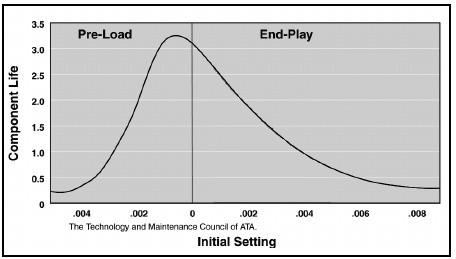| My Pete rebuild |
| 11-10-2018, (Subject: My Pete rebuild ) Post: #270 | |||
| |||
RE: My Pete rebuild (11-10-2018 )Nostalgic Wrote: Rawze - It's been a couple years? since you did your wheel bearing videos. Wondering if you've been back in to check it or had any issues with putting that high of a preload on without a spacer? I have to torque mine about every 200k miles, even with crush sleeves. They do work themselves loose through wear, stress and fatigue of those aluminum hubs over time. Quote:The term 'backlash' or 'end-play' is used when you can measure looseness with a dial indicator. The term 'preload' is used when your tightening something beyond 0.0 backlash and now putting resistance on the metal parts.  You could always simply put a sleeved match bearings in the hubs, torque them to about 300 ft-lbs, make sure you can spin the hub with one hand, but should have some resistance. Use a dial indicator to ensure you don't have backlash. -- Most of the bearing manufacturers of that size and type of bearings will tell you that they will actually last the longest when there is 0.001" pre-load (.001" tighter than the the point of no clearance at all, as shown in picture above) on them vs having some bit if .001-.003" backlash clearances. The only thing you want to avoid is having them so tight that the hubs get hot. Many of the old documents would suggest 0.002 - 0.004" play instead of any preload, but with these newer/cheaper aluminum hubs, they tend to come loose and/or cause excess tire wear. - If you can spin it by hand with some resistance, it is likely pretty close. - A dial indicator is your friend. Adjust the nut for 0.004" clearance initially. Then turn it until you get 0.003" clarance. - This will tell you how far to turn it for each 0.001". -- After that, if the hubs are aluminum, you don't want to leave them there despite what a bunch of morons at a shop would tell you. Torque them to 300 ft-lbs WITH THE SLEEVES REMOVED in increments while spining the hub a few times around until you get to 300. This will seat the OUTER RACES of the bearings completely in the hub and cause them to settle where they will likely ride under load. - Back it off again all the way. -- Next, install the sleeve, then adjust to the minimum torque required for 0.001" backlash, then turn the nut so that you remove an additional 0.002". this will put you at 0.001" preload (0.001" TIGHTER than the point where there is no more play). -- All while everything is completely dry, no oil on it yet. With sleeves, you will likely find you are now at about 300 ft-lbs or so. Without sleeves, you will likely you are around 70 - 80 ft-lbs or so. -- This is how I played with mine, I suggest people follow correct procedures and read the manual, make their own decisions. -- If you go with bearings without sleeves, you need to re-check them again in about 60 - 80k miles to ensure they did not seat further and get loose again. With the wear already on your spindles though,.. your only option though IS sleeved bearings. the drivers side is the side that gets loose, the passenger side almost always never does, but needs checking anyways just to be safe and avoid what has happened to them already. The reason the drivers side gets loose first, is that the forward direction of travel of the truck makes the nuts want to back themselves off over time. -- I looked at those pictures and thought to myself --, "Sheer Neglect!". -- And people wonder WHY they have nothing but problems out of their equipment. Re-torquing your hub bearings every 250k miles ESPECIALLY IF YOU HAVE ALUMINUM HUBS (most trucks do now) is a must, not a suggestion!. User's Signature: ->: What I post is just my own thoughts and Opinions! --- I AM Full Of S__T!. | |||
|
| « Next Oldest | Next Newest » |
NOTE: Rawze.com is not affiliated, nor endorses any of the google ads that are displayed on this website.




